
Humanimal. The Animal and Us
March 2nd – October 15th, 2023
The exhibition “Humanimal” presents a cultural-historical show of the ever-changing relationship between two-legged and four-legged friends. Whether revered deity or profitable slaughter animal, pampered family member or productive worker: the individual relationship with animals characterises the everyday life of each human being and touches nothing less than the human perception of the world and of itself. The special exhibition deals with key aspects of this often contradictory way of dealing with the living creatures that surround us.
“Humanimal” is an exhibition produced by the Badisches Landesmuseum Karlsruhe.
Supporting programme
The supporting programme as PDF
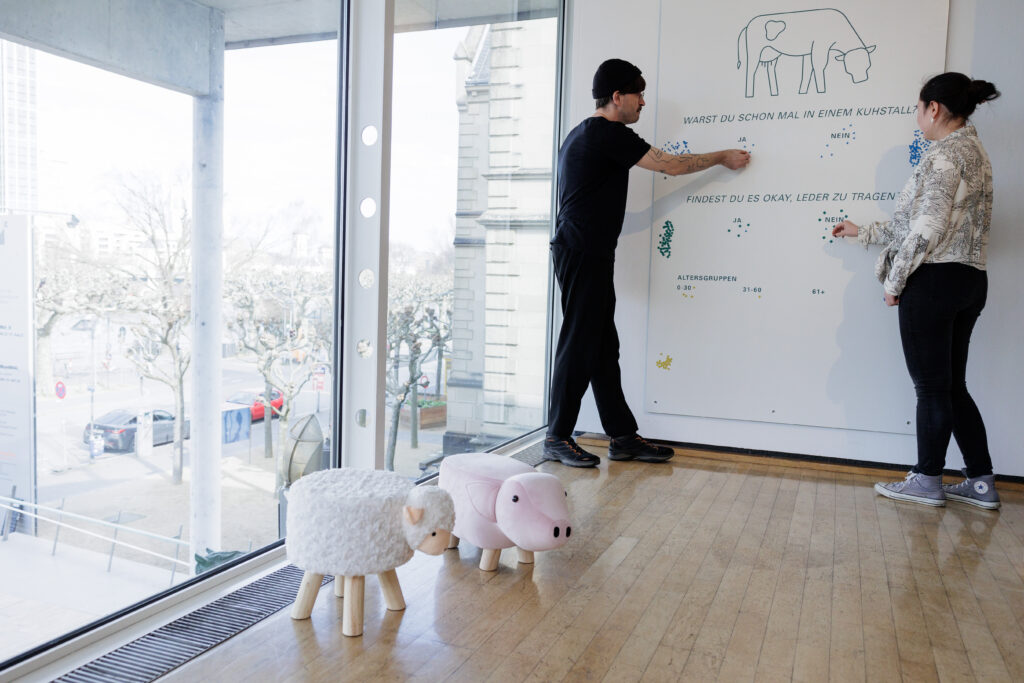
Frankfurt, Photo: Stefanie Kösling
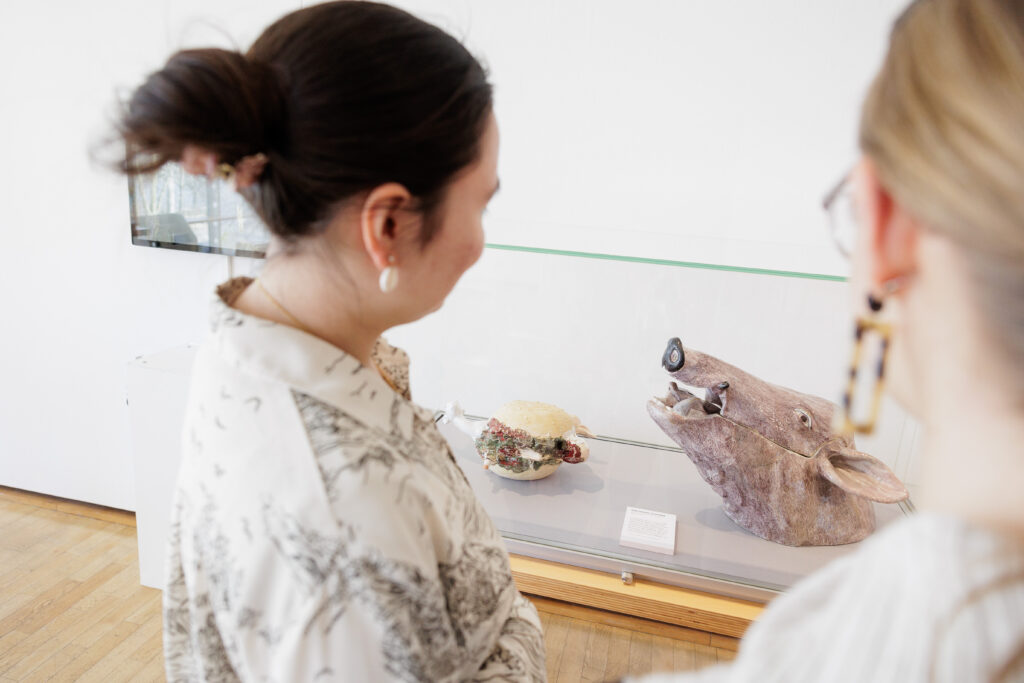
Frankfurt, Photo: Stefanie Kösling
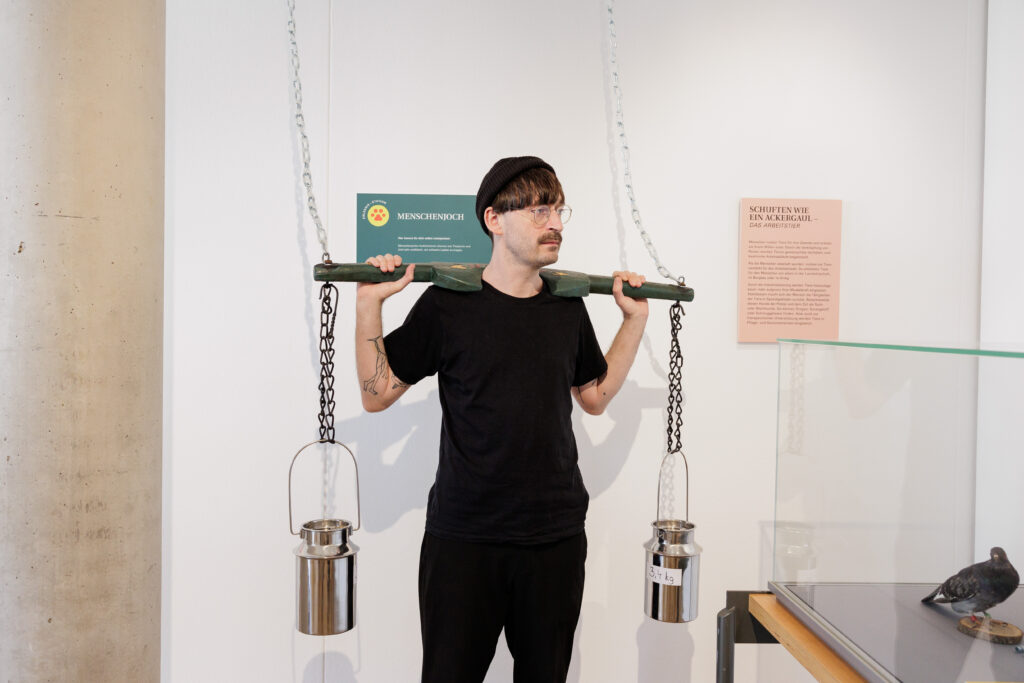
Frankfurt, Photo: Stefanie Kösling
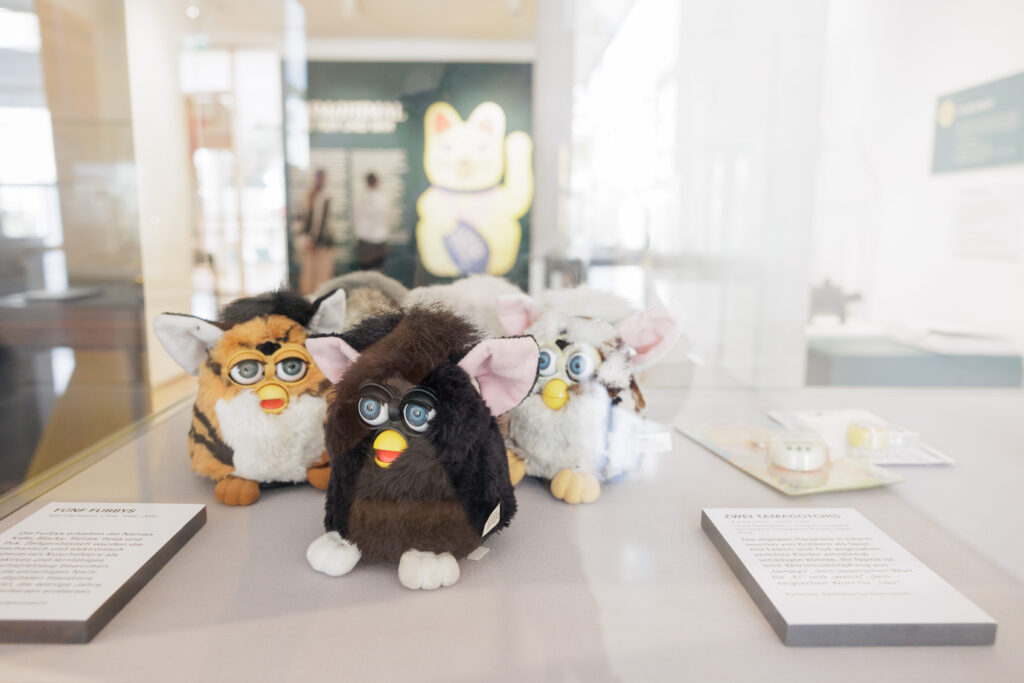
Frankfurt, Photo: Stefanie Kösling
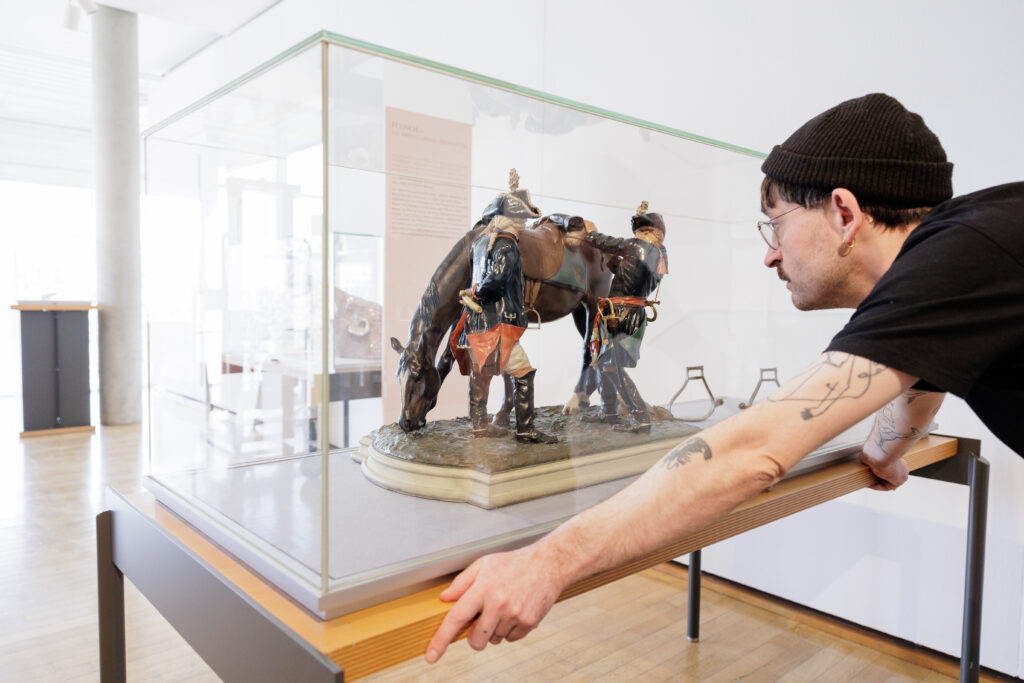
Frankfurt, Photo: Stefanie Kösling
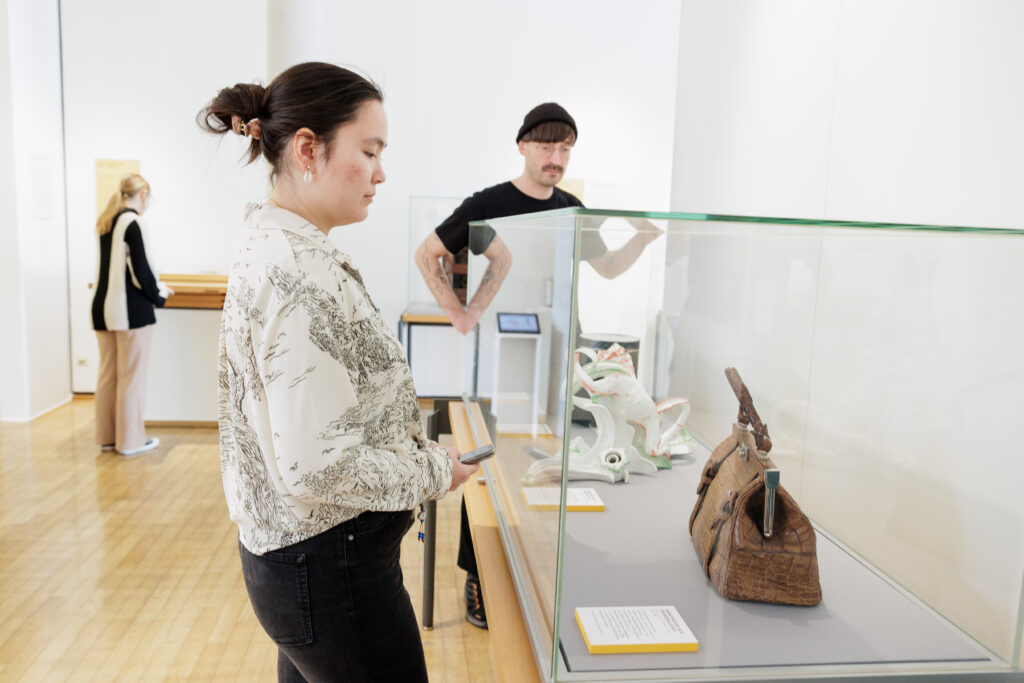
Frankfurt, Photo: Stefanie Kösling
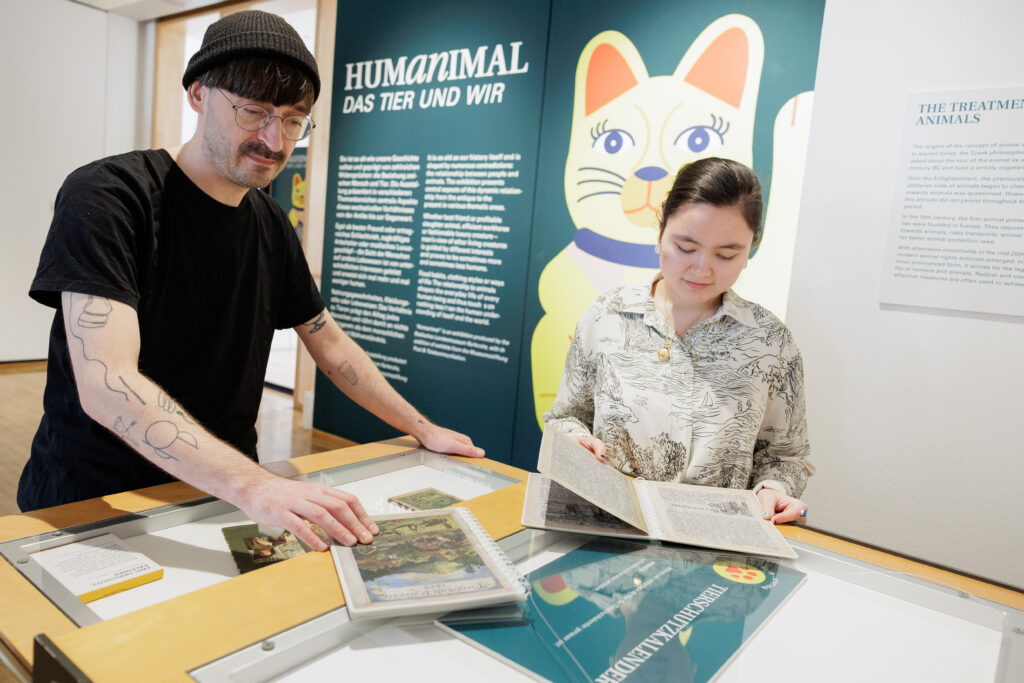
Frankfurt, Photo: Stefanie Kösling
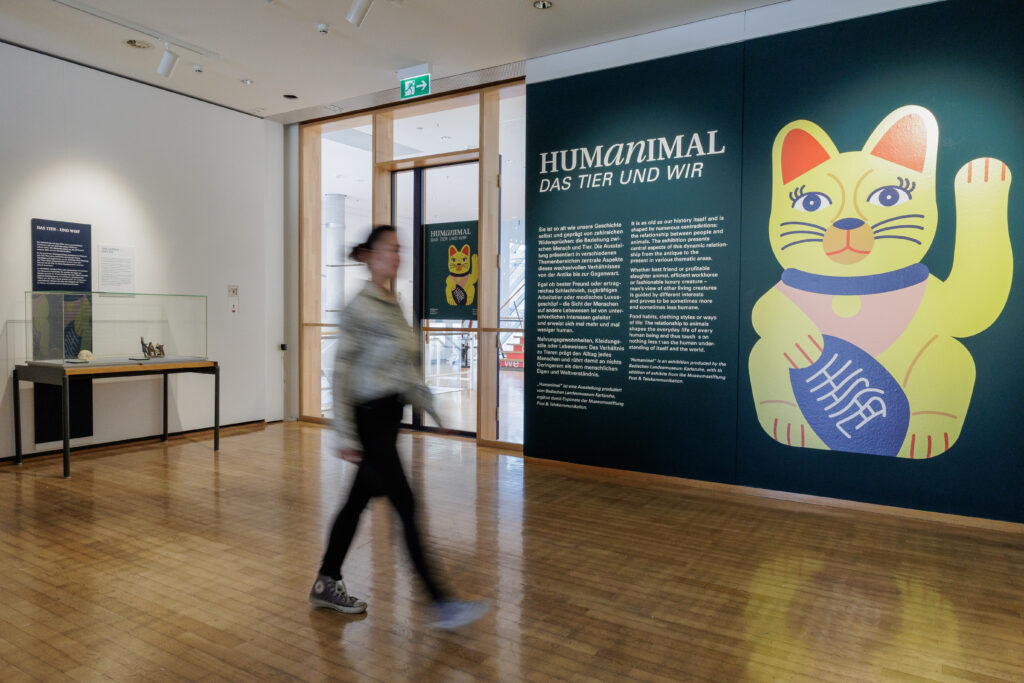
Frankfurt, Photo: Stefanie Kösling
Humanimal. The exhibition at a glance.
Around 40 exhibits from antiquity to the present day.
Is wearing fur still acceptable? Should we eat less meat or none at all? And since when have dogs and cats been living with us under one roof anyway? Around 40 exhibits from the collection of the Badisches Landesmuseum and the Museum Foundation for Post and Telecommunications illustrate the human-animal relationship from antiquity to the present day and also discuss current animal ethics issues.
THE ANIMAL – AND US?

Clay figure “Mayeux orangutan”
Zizenhausen (Stockach), ca. 1836-1840
Are humans descended from apes? In the style of a caricature, man and monkey sit opposite each other in a comparable posture. The standing man draws attention to the resemblance and humanises the monkey with the top hat.
DEALING WITH ANIMALS

Animal Welfare Calendar
Berlin, 1909
Ed. from the Federation of Animal Welfare Associations of the German Reich
Colorful animal welfare calendars have been popular print media since the late 19th century. With moralising short stories, aphorisms and illustrations, children are encouraged to treat animals with respect – in keeping with contemporary pedagogy.
CHILDREN AND ANIMALS

XXL teddy bear
East Asian production for Galeria Kaufhof, 2015
The inspiration for the teddy bear is the European brown bear. Once common in much of Europe, it is now a protected species. It was only the absence of wild bears and the associated strangeness that made it possible to characterise this predator as “cute”.
THE ANIMAL AS ENTERTAINER

Music machine with dancing bear
Switzerland, Aargau, 1883/88
The so-called vision machine shows a dancing bear with its bear trainer. Activated by coin insertion, music is played to which the figures move. The display of dancing bears served as amusement at fairs. This dance is the result of agonizing training.
ANIMAL COMMUNICATION

“Bowlingual Dog Voice Translator” Toy
Takary Tomy, Japan 2009
MSPT
The dog voice translator is attached to the dog’s collar and translates its emotions into Japanese. The invention is based on man’s desire to be able to communicate with animals.
EXCLUSIVE AND NOBLE – PRESTIGE OBJECT ANIMAL

Wall light of a rhesus monkey on a banana tree
Meissen, State Porcelain Manufactory, 1927
Around 1900, the number of public zoos increased significantly. Possibly the porcelain monkey was designed based on living models. In its own home, it served as a decorative wall lamp. Exotic animals are considered luxury objects – just like the valuable porcelain.
THE BENEFIT OF HORSES
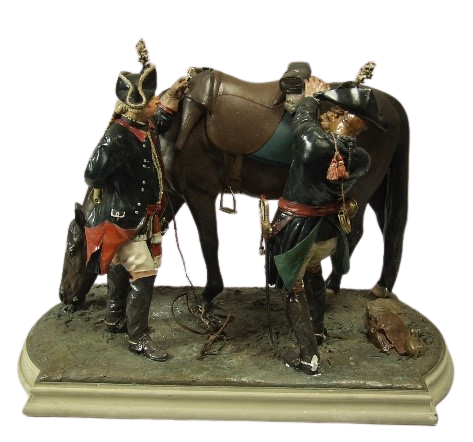
Sculpture “Prussian field postmaster and courier circa 1740”.
Curt Tausch, c. 1939, MSPT
The messenger system is already known to have existed among the Persians (5th century BC). The use of horses shortened the delivery time considerably. Tired horses could be replaced by rested ones at changing stations.
LEASHED – PETS AND THEIR HUMANS

Girl with pet
Damm earthenware factory, Aschaffenburg, mid 19th c.
The girl’s interaction with her pet shows gender-specific role models of the 19th century.
MEAT – AN AMBIVALENT FOOD

Sculpture “Hamburger “
Jürgen Zimmermann, 2005
Bambi as a meatball: the well-known fawn figure of the Karlsruhe Majolica Manufactory is provocatively staged in this sculpture. But why does the idea of a “cute Bambi” in a burger bun irritate us, whereas eating a venison stew is not a moral-culinary taboo?
Good hunting ! – MAN AND ANIMAL DURING THE HUNT
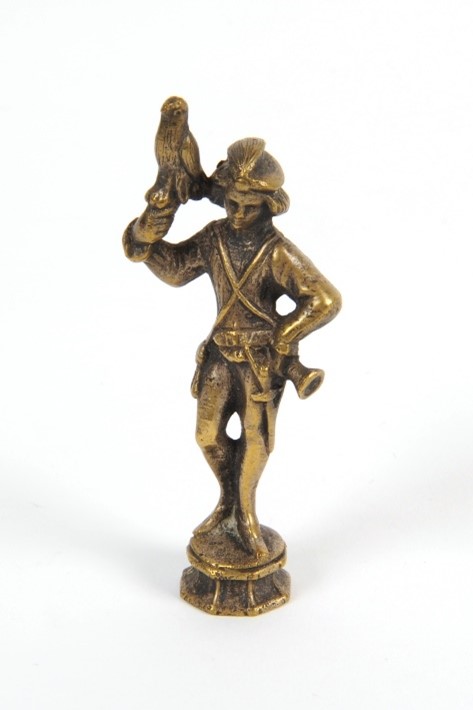
A falconer statuette, a hand stamp for sealing
19th c.
Falconer with bird of prey, wearing dress for falconry. On 17th and 18th c. the hunt reaches its climax. It becomes the privilege and entertainment of the nobility. Animals such as hawks become hunting aids. Hunting was practiced already in ancient times.
THE ANIMAL IN CULT AND RELIGION

Maneki-neko
China, 2019
Maneki-neko is, according to Buddhist-Shintōist beliefs, the rebirth of Kannon, god of mercy and benevolence. Originally a Japanese good luck charm, the waving cat is now also found in Western popular culture. The cat breed Japanese Bobtail, with erect ears and stubby tail, is used as a model.
SLAVING LIKE A PLOUGH HORSE – WORK ANIMALS
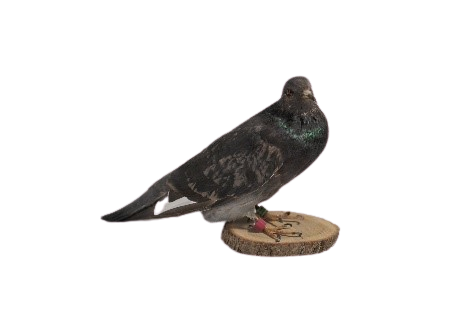
Carrier pigeon (stuffed)
MSPT
Pigeons have been domesticated for 5000 years and have been used as a means of communication since Greek and Roman times (5th century BC). They find their way back to their loft from areas completely unknown to them, using the terrestrial magnetic field as a compass. The carrier pigeon is descended from the rock dove.
GUARANTEED LOW-MAINTENANCE – THE TECHNICAL ANIMAL
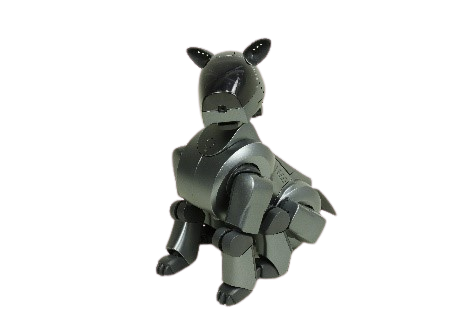
Toy Robot “Aibo ERS-210”
Sony, Japan from 1999, MSPT
The word AIBO (AI = artificial intelligence + robot) means “partner” in Japanese. It is supposed to be a lower-maintenance version of a dog. This allows the smart robot to move and show life-like behaviour, as it knows the basic instincts of a dog.
OVERBREEDING – THE ANIMAL BETWEEN CULT AND TORTURE
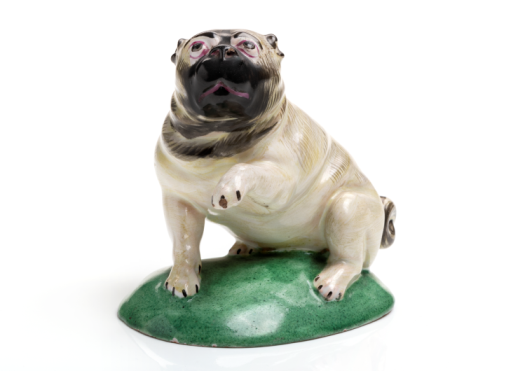
Porcelain figure: pug with left paw raised
made of porcelain and faience
Porcelain manufacturers, Frankenthal and Höchst, 2nd half of the 18th century.
In Europe, pugs were already so popular in the 18th century that they were immortalised in porcelain. One factor in its popularity is the flat nose, which is the result of overbreeding. In doing so, one accepts that the animals suffer and can hardly breathe.
ON AIR: Humanimal – The Animal and Us.
Radio broadcast and podcast on the exhibition.

To the podcast
The Museum of Communication’s radio team produces “On AIR: Humanimal” in cooperation with Radio X – Frankfurt’s city radio station – as live broadcasts on the 2nd Wednesday of each month from 3:00 to 4:00 pm. The programme is about the often ambivalent relationship between humans and animals. Experts on different topics are on air, including animals and monsters in science fiction, zoo and city animals, but also post horses and carrier pigeons. After the broadcast, the programme will be available to listen to for seven days in the Radio X media library before being published online as podcasts here We are already very curious – and you?
The “Humanimal” podcast enters its second season in Frankfurt; the first season was initiated jointly by the Badisches Landesmuseum Karlsruhe and Querfunk – Freies Radio Karlsruhe, to accompany the Humanimal exhibition.
















